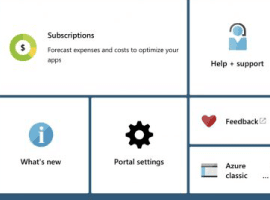
It is time for the top leadership in organizations of all sizes to recognize that an ad-hoc approach to managing e-mail is highly inefficient and an enormous drag on human resources. E-mail management: the prioritization, planning and archiving of e-mail, should be systemized and standardized in every organization.
The perennial challenge of how to structure and re-structure the processing of e-mail has been relentlessly unrewarding at best.
Clearly, the most important prerequisites to improving a dependable system are, first, actually having a system, and second, having a system that you implicitly trust. Confidence in the integrity of the system is of paramount importance. Without it we are tempted to believe that our system is situational rather than consistently stable.
Imagine if you could only rely upon your partner when he or she was in a calm state. When things heated up the rules you agreed upon were subjugated by their selfish need to get their own short-term needs met. Even if we know of couples that have endured this type of a relationship for years, we can all imagine that it would be far from blissfully ideal. Instead of having a clear framework in place in order to maintain a healthy caring relationship, a pseudo-framework undermines any hope for stability and trust. Now let’s apply this thinking to an area of our lives where a stable and reliable system is conspicuously missing: our management of e-mail.
The typical Outlook veteran has changed their way of managing their e-mail any number of times due to the difficulties they endure with the ever-growing problem of increased volume and complexity of e-mail. The perennial challenge of how to structure and re-structure the processing of e-mail has been relentlessly unrewarding at best. Many of us have spent many hours, consciously or not, devising new ways to make sense out of how to apply a series of rules, filters and folders only to abandon them one by one for yet a better, simpler, clearer method that is hopefully more efficient and less stressful. In the end hands are thrown up in the inevitable realization, again, that “this will have to do for now”.
Just imagine the number of hours that are spent by individual R&D gurus, like you, boldly exploring the bowels of MS Outlook in search of that homerun solution. Hours float by as you test this and that method. Wanting to improve, as you do, you justify this time spent as an important time-saving measure.
At some point, however, just as the older generation stops listening to pop music or buying the latest trendy fashions, we resign ourselves to the fact that most of the improvements we’ve made have been short-lived and the ones that have stuck are mainly still there because, well, we have a hard time justifying spending more time on something that won’t be more satisfactory anyway.
Isn’t there someplace or someone to turn to in order to get a fix on this? The available publications on the subject are either so complicated that you wonder if the author really takes her own medicine, or too basic and out of touch with reality in their approaches.
The answer, as you may have surmised from the title of this article, lies not in a few good tips from hip DIY authors or gleaned from Internet sites promising more of the same elixirs. Instead, we need to eliminate the complacency that is rife in top management about this subject in order to come to real terms with the challenge and thereby unleash a hidden source of profitability on a scale of staggering proportions.
| The truth is that e-mail management is broke and in order to fix it we need to systemize and then standardize the processing of e-mail. |
We are living in a technopolitical age where IT departments are focused on savings and unification while knowledge workers are drowning in information overload – often due to extreme inefficiency in synchronous and asynchronous communication and document handling. Top management seems to be looking the other way, ostensibly with the perception that, well… if it ain’t broke don’t fix it;a prime example of good being the enemy of great.
The truth is that e-mail management is broke and in order to fix it we need to systemize and then standardize the processing of e-mail.
Most of the C-level executives that I have worked with have far less difficulty managing their e-mail than that of their subordinates because most of what they do in their inbox is delegate to others or make immediate decisions. After all, that is what C-level executives to do in order to earn their keep.
E-mail overload is, as Forbes Magazine stated in 2008, the leading cause of preventable productivity loss in organizations today.[1] Note here that Forbes didn’t claim e-mail overload as one of the leading causes of preventable productivity loss but THE leading cause. So why does the clear dismissal of this warning silently resound in most every board room?
I believe that the complacency originates from the fact that most of our top leaders either refuse to believe what Forbes and other reputable sources such as the Radicati Group and Basex are claiming due to the skewed lens from their experience at the top or they are unaware that a new LEAN-based work-flow methodology for processing e-mail exists. (Plausible since it is relatively new solution) But it is also my experience that management rarely gets wind of the opportunity because before it reaches a strategic level the potential solution is delegated to the IT department instead of being recognized as a business development opportunity. The value proposition – increased profitability through applying proven LEAN techniques to communications and information management is thus presented to those whose world is about reducing storage costs, enabling cross-platform communication, migration and lowering helpdesk visits. Why would IT want to take on more work that doesn’t correspond with their mandates when they are not even able to handle their current demands?
If there is no system of prioritizing mail within your organization then the best you can do is hope that you and your colleagues have a good feeling for getting things done in the right order. But I submit that with the speed and volume of mail that pounds us day in and day out, the old days when we could improvise are over. We need a systemized approach that is in line with our work environment if we are going to ensure that we work profitably during the 20%-40% of the day we knowledge-workers spend managing mail.
Notice that I employ the word profitably rather than effectively or efficiently. Think of your inbox as a big traffic jam with lots of cars (the stuff to do and left-over junk that make up 80% of the content of your inbox) and big trucks (the 20% that bring you 80% of your profitability). Naturally you would want to clear a lane for the big trucks because the more trucks that get through, the more profitable your company will be.
But is that how we work today? Don’t most people often click on their inbox in the morning or after meetings and deal with mails according to the last in, first outprinciple? Even if you believe that you and your colleagues are fairly good at spotting the big trucks amongst the line after line of mail in your inboxes, it is clearly no match for a systemized approach that guarantees that the big trucks are always at the top of your list. (You must experience this in order to really understand it – like the difference between sky-diving and reading about sky-diving).
| The reality is that employees are reasonable people and they will prefer a valuable solution over a poke in the eye with a sharp stick any day. |
Add to this the need to leverage the distinction between urgency and priority. As Stephen Covey has pointed out in The 7 Habits of Highly Successful People, the need to distinguish urgency from priority is critical to any successful business or even a personal strategy. If we don’t systemize our method of working with e-mail, how can we ensure that they consistently work according to the dictates of priority and urgency? (Maybe that is why your teams are spending most of their time putting out fires instead of planning and innovating?)
Let’s face it, it happens every now and then that you spot a big truck in your inbox and your heart skips a beat because you should have taken care of the action regarding it last week – or even two weeks ago. Somehow you shrug it off and hope that it has been forgotten on the other side of cyberspace (it hasn’t). That is just one example of how complacency regarding poor e-mail management is so rife in organizations today that very few take notice of the tremendous costs and missed opportunities that hamper double-digit profitability where profitability is most easily attained.
Imagine your teenager shoveling the snow off your driveway. You can almost hear him swearing at the indignity of being forced into sharing in some family responsibilities. His method is questionable – even after you have shown him your fantastic technique. (I can imagine how impressed he was with it!) But that’s ok, because you haven’t hired him to shovel the driveway, and your business is not dependent on his effectiveness.
Now imagine that you are responsible for the effectiveness of 5,000 people in your organization (or even just 10 people). You look around you and you see that everyone – EVERYONE – has their own cooked-up recipe for dealing with e-mail and their efficiency is less than half of what it could be. Taking the bull by horns, you propose a company-wide LEAN approach to e-mail that will set the new standard at Acme Corp. The response, you fear, is: Go ahead, punk, (pause) make my day, á lá Clint Eastwood, but you couldn’t be more mistaken.
The reality is that employees are reasonable people and they will prefer a valuable solution over a poke in the eye with a sharp stick any day. They just need to be introduced properly, and then supported while they adapt to the new way of working.
If benefits like lowered stress, increased revenues and more efficiency are presented properly and supported by top management, most worthy employees would abandon the patch-up job they’ve done with Outlook in a minute – actually in two and a half hours. They may be cautiously skeptical or slow to change because they’ve grown tired of trying home-grown or band-aid solutions they find ubiquitously on the Net, but they aren’t dumb.
In the end it is about two things: 1) trusting that employees want to improve instead of holding on to the belief that ad-hoc mail management is the best that you can do; and 2) taking a leadership role by supporting the effort properly.
About the Author 
Michael Hoffman is an Executive Coach; CEO of LeanMail, a suite of productivity solutions for email, meetings and projects; and Partner, CEO of Atrendia, a consultancy firm working with medium to large organizations bringing about dynamic improvements in productivity for knowledge workers through innovation and the facilitation of change. Michael has diverse experience in various management roles involving many kinds of people and cultures. His experience as an entrepreneur spans over 25 years.











